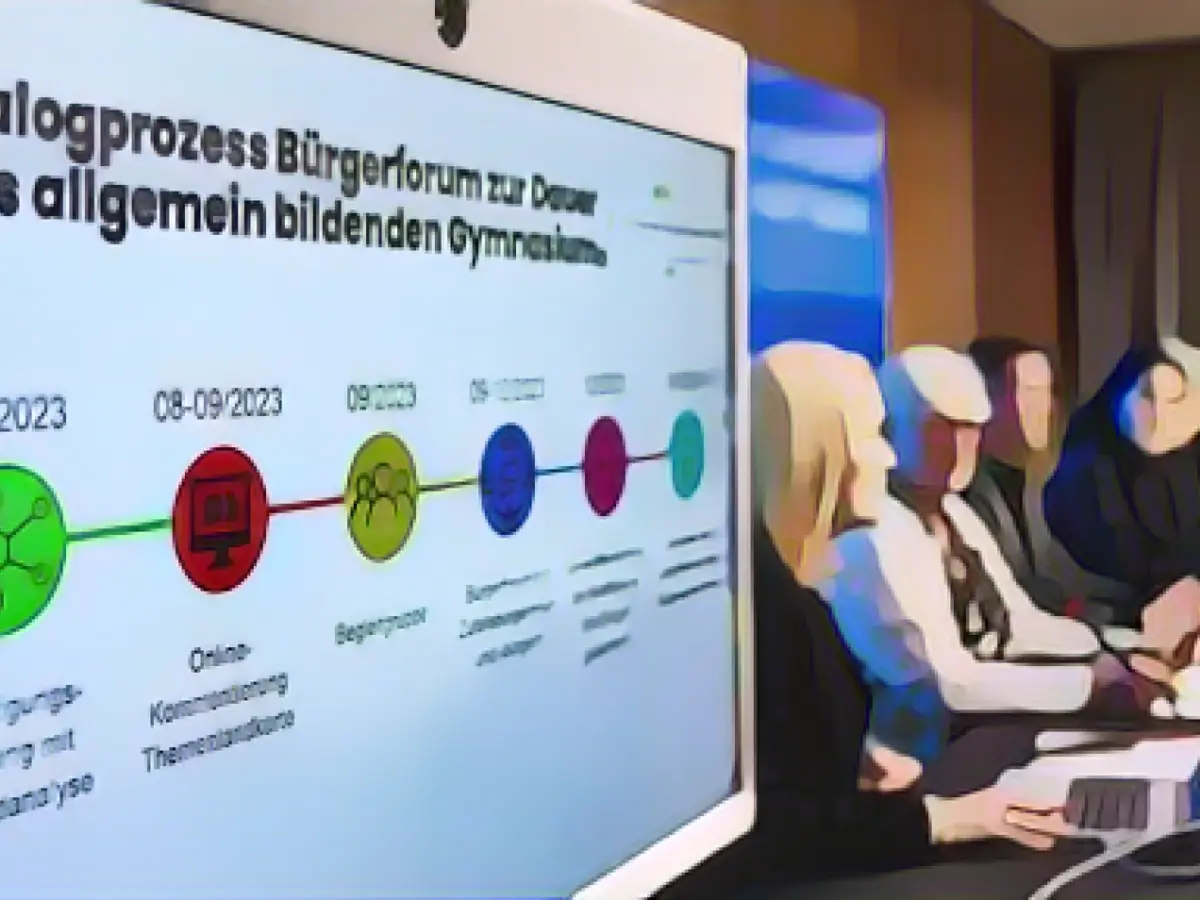Baden-Württemberg Aims to Revamp Nine-Year Grammar School Model
The Southwest German state of Baden-Württemberg is considering a new approach to its grammar school system, with the government looking to develop a fresh model for a nine-year Grammar school, according to a resolution from the Green-Black coalition, revealed to the German Press Agency (DPA). The move comes amidst ongoing debate and growing support for a return to the G9 model, driven by parental initiatives and a citizens' forum.
The state government, led by Minister President Winfried Kretschmann (Greens), wishes to create a modern G8/G9 model that meets contemporary needs, rather than simply reverting to the G9 system of the 1990s. "We're not going to make any hasty decisions or simply return to the G9 of the 1990s. We'll work out a solution that suits our time and takes up the recommendations of the citizens' forum," said Kretschmann in Stuttgart on Tuesday.
Growing momentum around the debate over a nine-year Grammar school system in Baden-Württemberg has persisted for decades. The Green-Black coalition, which oversees the state's education system, initially shied away from structural debates related to G9. However, under mounting pressure from the debate, the government signaled its willingness for a return to the nine-year program in mid-June.
Alongside the citizens' forum, parents have rallied for a return to the Grammar school system, collecting over 100,000 signatures for a popular petition. The initiative aims to persuade the state parliament to deliberate on the motion during next year's session.
Advocates of the G9 model cite various benefits that stem from a two-tiered educational approach, involving specialized tracks and a focus on parental choice. They argue that such a system ensures more effective learning and supports pupils with iffy performance.
The debate over the nine-year Grammar school system's return to Baden-Württemberg highlights the complexities associated with educational reforms and the importance of carefully weighing potential benefits against any drawbacks.
Additional Insights
- Policy history: The integration of the higher tracks of lower secondary education, including the Gymnasium and Realschule, significantly increased between 1955 and 1995, resulting in a decline in the proportion of pupils attending lower-level tracks (Hauptschule).
- Two-tiered models: Following reunification in 1990, two-tiered models – emphasizing an academic and a combined vocational track – were introduced in some Eastern German Länder, such as Saxony, Saxony-Anhalt, and Thuringia.
- Parental Involvement: Parents play a significant role in school placement decisions, with the degree of binding force on recommendations varying by Land. Entrance examinations and recommendations aim to streamline pupil placements and ensure that students are in schools that best fit their abilities.
- Regulation and implementation: Regulations, such as the Thuringia School Law, pertain to the choice of schools and educational tracks. Strategies emphasize parental choice, coinciding with pupil aptitude, and maintaining educational efficiency.
- Flexibility and adaptability: Comprehensive education systems allow for greater flexibility in school decisions, particularly in regions without fixed catchment areas.
References
- (accessed January 11, 2023).








